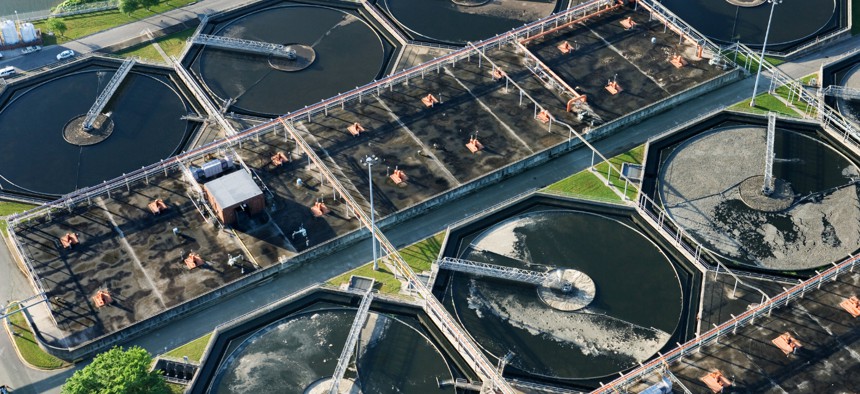US water infrastructure ‘unsustainable’ amid rapidly evolving crisis, report warns

Jupiterimages/Getty Images
The United States is facing an unsustainable demand for water and lacks the security posture to defend the nation’s water systems from emerging threats, according to a new report.
The National Infrastructure Advisory Council voted unanimously on Monday to approve a new report that describes current U.S. water infrastructure as "unsustainable" and warns that the nation is not prepared to cope with a "rapidly evolving water crisis."
There are more than 150,000 public water systems in the U.S., and an estimated 80% are publicly owned and operated by municipalities. Water and wastewater systems have faced increased cyber threats in recent years, in addition to new security challenges posed by climate change, growing demand for fixed water supplies nationwide and a critical lack of funding.
The report attributes inadequate conditions across the water and wastewater industries to "decades of chronic underfunding and underinvestment" in the U.S. and makes several recommendations to increase water supply sustainability, from aquifer recharges to developing highly integrated water management systems.
Nitin Natarajan, deputy director of the Cybersecurity and Infrastructure Security Agency and a NIAC member, said during a meeting of the advisory council that "building resilience in our water systems really can't be overstated."
"We need to do the work up front to really prepare for the disruption and anticipate what could be disruptions in the future," he said. "We need to practice and prepare, not just our response, but really looking at continuity and recovery as well."
The White House advisory council's subcommittee on water security also highlighted ongoing challenges in recruiting and retaining a more specialized workforce to strengthen the sector's cyber posture and defense against emerging threats.
The report notes that women are "particularly underrepresented in the water sector workforce" and says most young people "do not view the water sector as an attractive career path."
NIAC recommended further leveraging smart system monitoring technologies and information system management tools to provide new workforce opportunities, writing: "Without additional investment in technologies routinely employed in other infrastructure and employees, water utilities will be hard pressed to find the skilled employees needed to meet their cybersecurity needs."
The council, which consists of private sector leaders and state and local officials, urged the White House to streamline the permitting process for water projects — an often complicated procedure that can take up to 10 years in some cases — and assist low-income and vulnerable populations in restoring at-risk water systems through federal investment. The report also recommended the administration provide funding for research in artificial intelligence and how it can be used as a water resource management tool.
NIAC called on the Environmental Protection Agency to broaden its water sector workforce initiative and "focus on diversity and inclusion to create a pipeline of workers," and to expand its innovative water infrastructure workforce development grant program.
As the sector risk management agency for water and wastewater systems, the EPA is tasked with overseeing cyber hygiene practices and cybersecurity planning for water systems across the country. Earlier this year, the agency released new cybersecurity guidelines instructing states to conduct regular sanitation audits of their water systems and survey digital networks that oversee water filtration systems.
The non-binding guidance was temporarily blocked last month by a federal judge in St. Louis pending a legal challenge filed by state attorneys general in Missouri, Arkansas and Iowa. The Republican-led lawsuit alleged the new guidelines would create expensive legal requirements that could financially harm smaller, less-resourced water systems.



